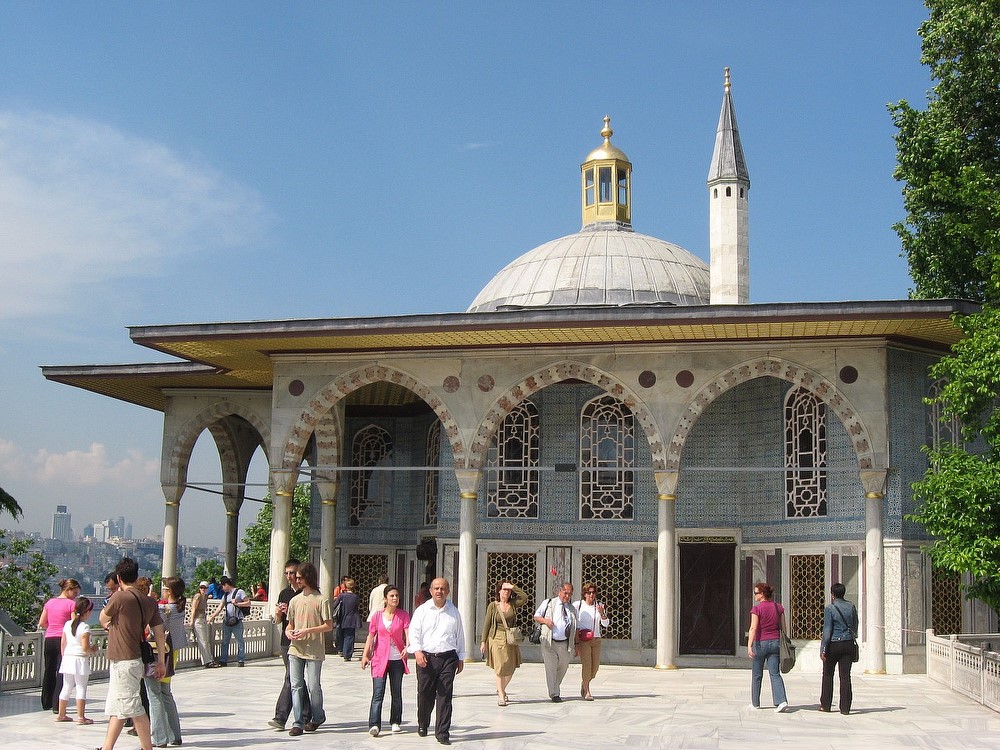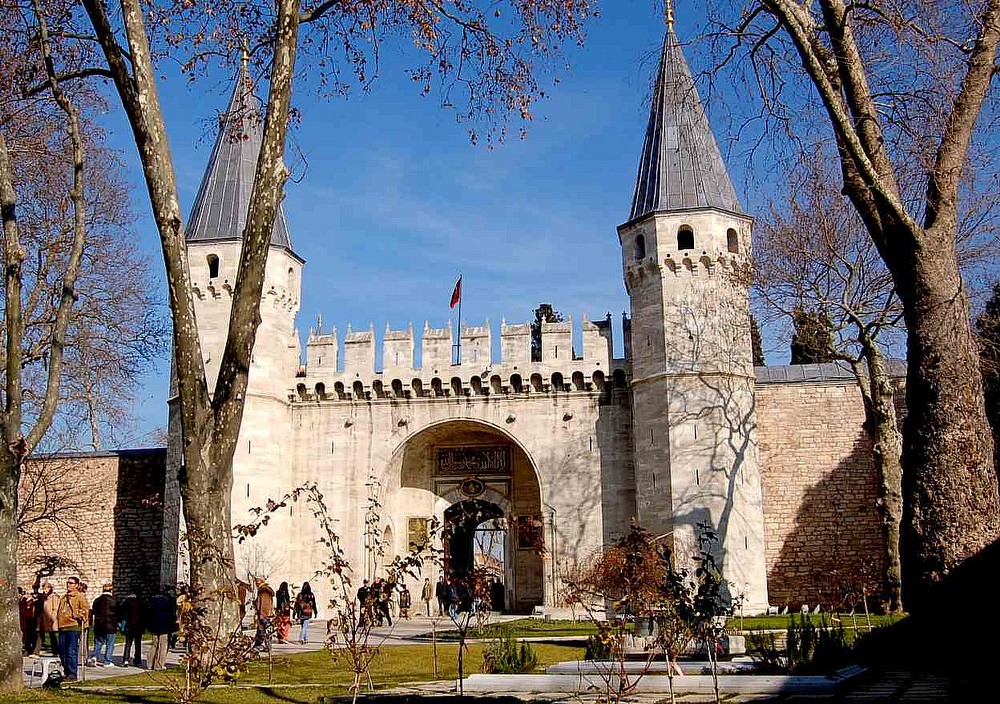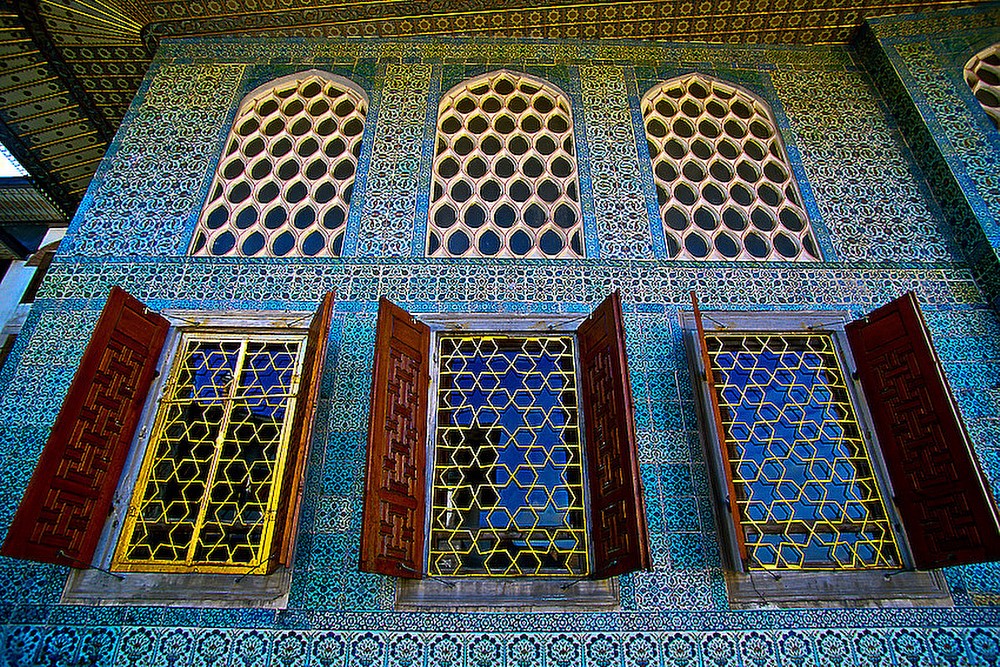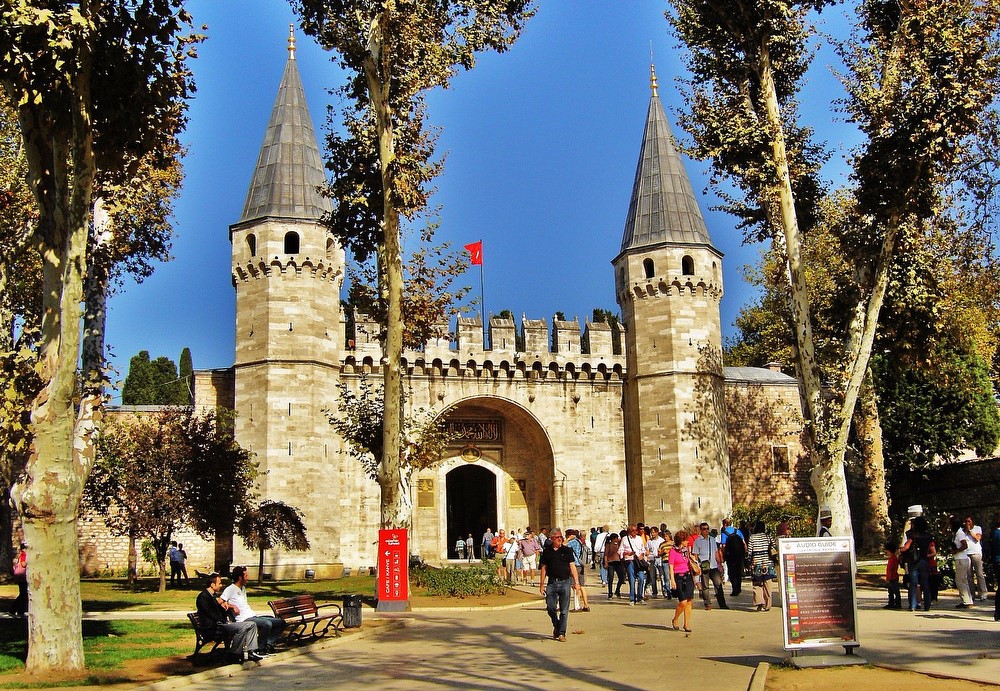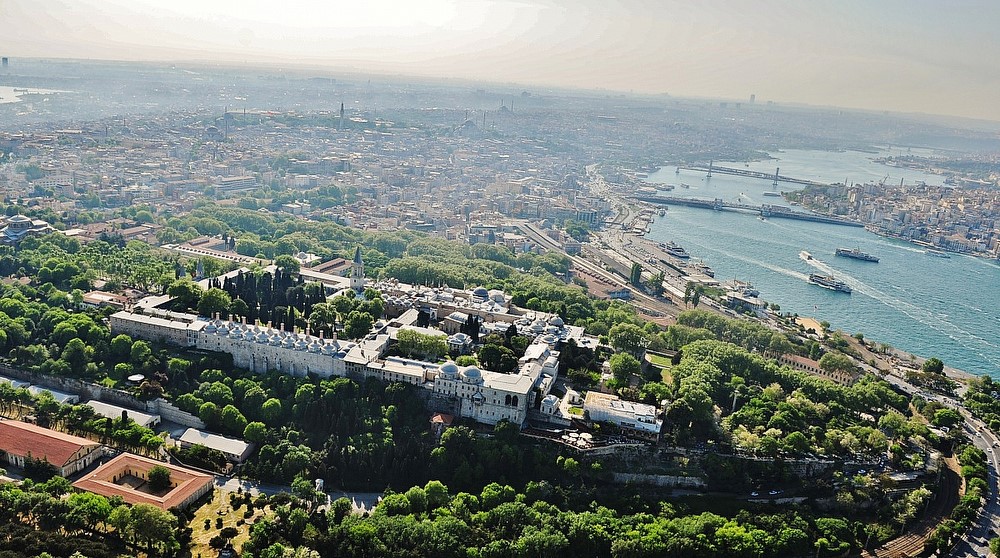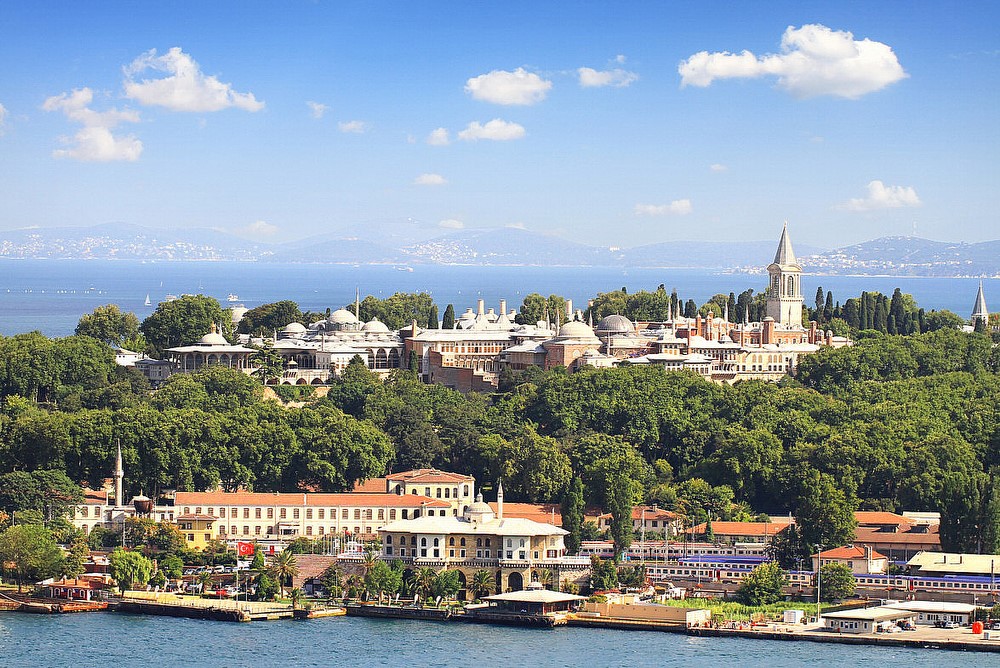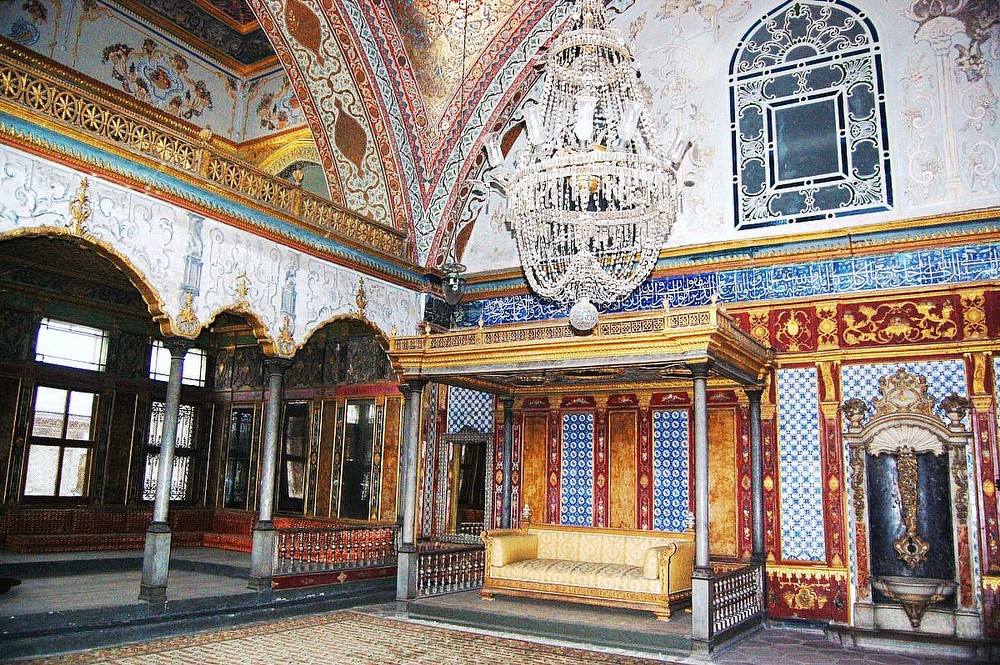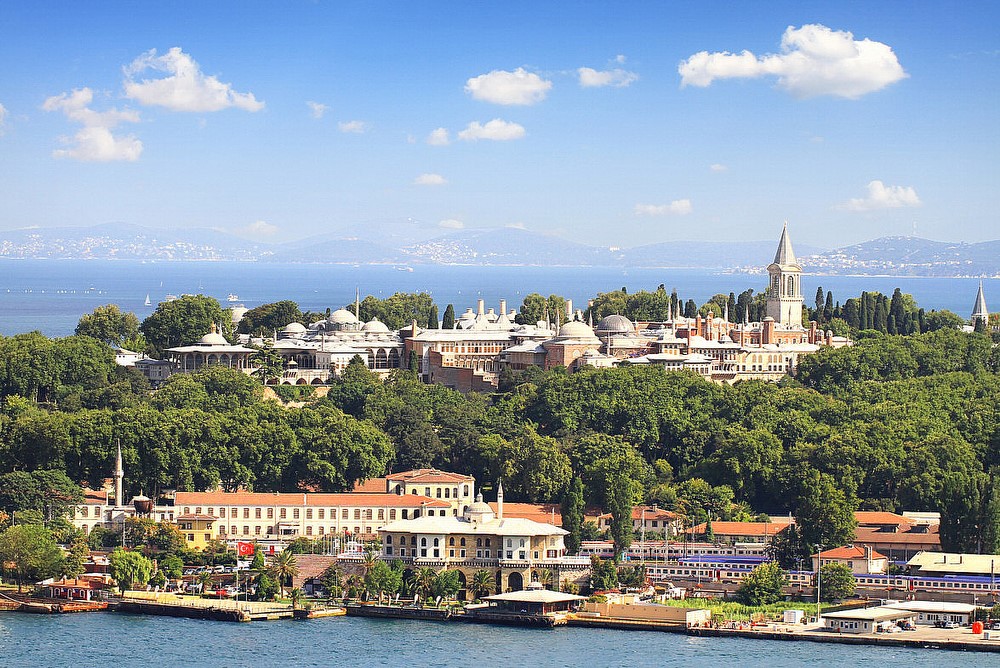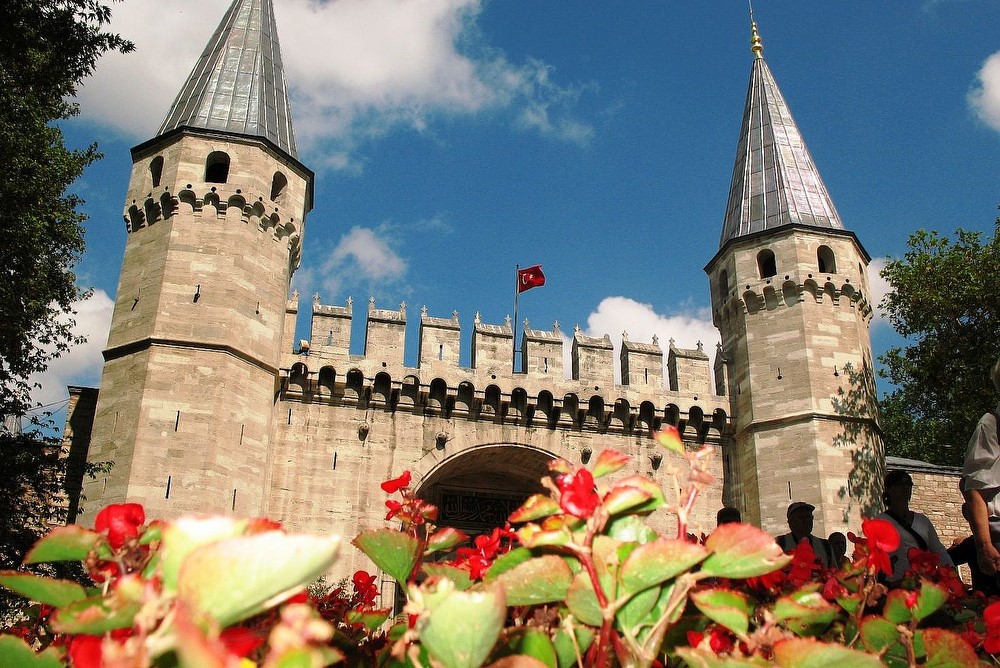TOPKAPI PALACE
Beautifully situated on the site of the old Byzantine acropolis, Topkapı Sarayı (literally “Palace of the Canon-Gate”)—the largest Ottoman building complex—served as home to the Ottoman emperors for more than five hundred years. Built by Mehmet the Conqueror beginning in 1453, the palace is divided into five distinct courts: royal bakeries, a hospital, the imperial mint, and servants’ quarters in the first court; the seat of the Imperial Council, a mosque, the records office, stables, and the entrances to the harem in the second; the Audience Chamber, library, safe-keeping rooms, and royal treasury in the third court; and residential quarters for the Sultan and his princes, as well as the royal harem, in the fourth. The remnants of Ottoman imperial glory are everywhere fully on display: elaborate thrones; diamonds, emeralds, and other wondrous gems; elegant royal clothing; golden cradles; portraits and miniatures of the Sultans; fine porcelain; daggers and other weaponry; and the material of everyday life.
The harem—literally meaning “forbidden” or “private”—housed as many as three hundred concubines under the Ottoman Sultans. Upon entering the harem, girls would be schooled in Islam and Turkish culture and language, as well as in the arts of cosmetics, dress, comportment, music, reading, writing, embroidery, and dancing. They then served first as ladies-in-waiting to the Sultan's concubines and children, then to the valide sultan (the head of the harem, who herself owned large estates and wielded profound influence over the Sultan) and finally—if they were particularly attractive and talented—to the Sultan himself.
Stroll through the grounds at a leisurely pace, imagining the opulence of Topkapı Sarayı at the height of Ottoman power, its grounds filled with strong rulers, ministers, and awe-struck visitors.



